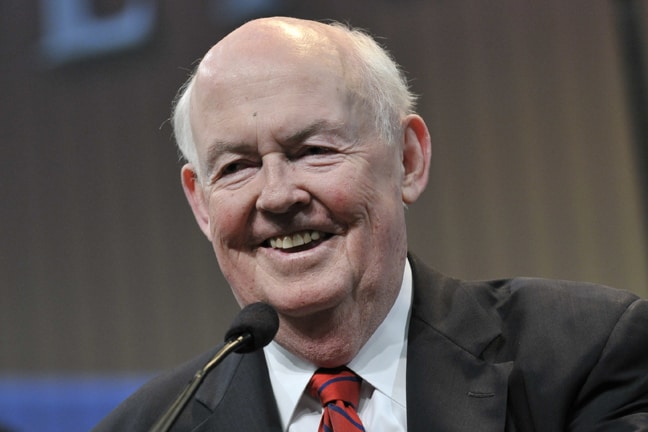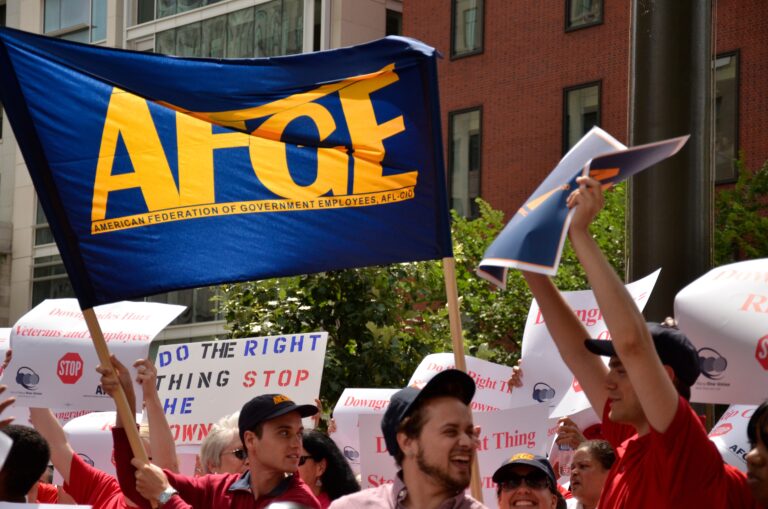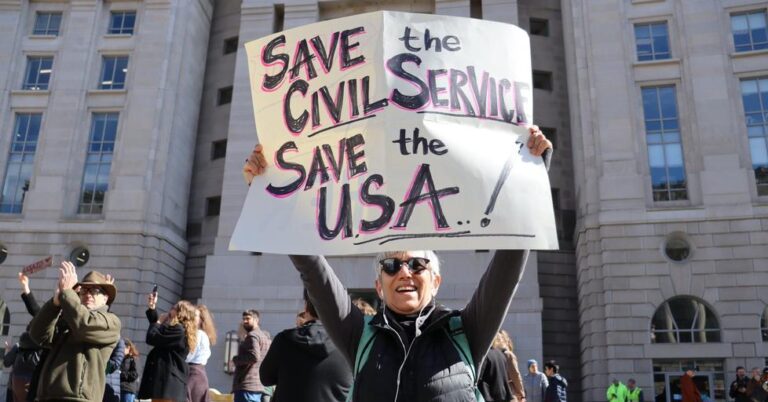The Fifth Circuit recently ruled that the fast-food chain In-N-Out Burger violated the National Labor Relations Act when it prohibited employees from wearing “fight for 15” buttons at work. Amanda Healey wore a quarter-sized button in April of 2015, and a couple of co-workers caught on, and hoped, too, to show support for the movement for a higher wage. They were told, instead, to comply with a “no pins or stickers” rule (a general rule that did not, apparently, include mandated charity-drive advertisements or seasonal Christmas buttons). Management has now been told that they could not interfere with workers’ rights to wear objects that advocate for protected NLRA rights, including unionization or union support, better working conditions, or higher wages. Exceptions to this expressive right are “narrow,” the Fifth Circuit confirmed, and apply only in situations where insignia might “jeopardize employee safety,” “damage machinery or products,” “exacerbate employee dissension,” or “unreasonably interfere with a public image that the employee has established, as part of its business plan, through appearance rules for its employees.”
On Friday, Judge Susan Richard Nelson of the U.S. District Court for the District of Minnesota declined to certify a multi-state class of thousands of NHL players. The retired and current players allege that the league failed both to warn players of the known risks of head trauma and to care for concussed players, and promoted violent play leading to head trauma. Judge Nelson cites case management concerns and finds that the widespread variation in medical monitoring laws across the states render one class untenable. She rejected the players’ proposal that the law of New York, where the NHL is headquartered, should apply, or that players could group together states that treat medical monitoring claims similarly. The initial proposal was to certify one class of all living players, and one of living and dead players who have been diagnosed with a neurological condition (e.g., Alzheimer’s).
Lawyers and stakeholders have continued to parse Judge Kavanaugh’s record on employment and work-related issues. On the American Constitution Society blog, Professor Ruben Garcia, Associate Dean at UNLV School of Law, focuses on a 2014 dissenting opinion in SeaWorld of Florida, LLC v. Perez, which expresses Kavanuagh’s “deep skepticism of the institutions that Congress designed to protect American workers.” In SeaWorld, as Andrew Strom has discussed, the D.C. Circuit affirmed OSHA’s imposition of penalties on the theme park after a killer whale grabbed and drowned experienced orca trainer Dawn Brancheau during a live show. Under the Act’s “general duty clause,” OSHA imposed a $70,000 penalty for the park’s awareness of hazards likely to or actually causing death or serious harm, and willful failure to take available measures to abate the hazards. SeaWorld contended that the clause was unconstitutionally vague as applied, that a business activity that is inherently risky cannot amount to a “recognized hazard,” and that the ALJ’s factual findings were flawed. Under arbitrary and capricious review, the D.C. Circuit panel rejected SeaWorld’s arguments, with Kavanaugh dissenting. To Dean Garcia, Kavanaugh’s impassioned lament of the paternalism of OSHA evinces a distrust of agency action that is not belied by legislative intent; the lawmakers were clear on the goals of OSHA, the broad grant of authority of the general duty clause, and the extent to which workplace safety regulations were meant to supplant assumption of risk and other tort doctrines, but Judge Kavanuagh considers OSHA’s decision-making power fundamentally arbitrary. Vanity Fair’s Bess Levin laments that Kavanaugh’s “opinion that trainer Dawn Brancheau basically had it coming is just one of many that scare people who value things like workers’ rights, clean air, and consumer protection.”
The New York Times describes teachers’ unions mobilizing efforts in the wake of Janus (a decision that, the Times notes, seems to cast a shadow over any Supreme Court nominee’s “solemn promise[] to abide by court precedent”). With aggressive “recommitment” campaigns targeting the most union-heavy states, the American Federation of Teachers is securing new memberships and strategizing how to counter conservative celebrations of the power of “choice.” In New York State, educators are going door to door, sharing information on potential recruits via a smartphone app, and learning to listen to naysayers in order to adjust to and make their case in an opt-out world. Across 18 states, 500,000 of 800,000 members have reenrolled.
On Saturday in Pittsburgh, four national union presidents addressed the convention of the American Federation of Teachers. National Education Association president Lily Eskelsen-Garcia, Service Employees International Union president Mary Kay Henry, and American Federation of State, County, and Municipal Employees Lee Saunders joined AFT president Randi Weingarten to demonstrate solidarity and renew vigor in the fight against the “political attacks” on labor unions. Saunders vowed to rise “to the moment in the face of hardship,” having done it before.
In Spain, union organizers are hoping to energize a strike of Amazon workers and even a global customer boycott of Amazon. The actions are timed to disrupt tomorrow’s “Amazon Prime Day,” a heavily promoted sales holiday that is predicted to generate $3.4 billion in revenue. The Independent reports that Spanish unions have asked workers at warehouses to conduct a two-day walkout in order to protest working conditions. It is unclear how widely the #AmazonStrike movement will spread.
In Jacobin, Professor Alex Gourevitch expands on his American Political Science Review article The Right to Strike: A Radical View, to articulate a radical defense of the right to strike. Gourevitch argues that this right should remain a priority for workers’ rights advocates, despite increasing emphasis on “other social policies” such as “a universal basic income, workplace democracy, and socialized means of production.” In his account, the only way to fight the oppression of employers and workplace inequality is to embrace workers’ “right to resist.” And, in turn, such a right depends on revisiting an older, more oppositional, model of organized labor that revolves around strikes, pickets, and workers’ using economic weapons to fight capital.
In the New York Times, researcher Alex Rosenblat describes how “[d]igital inequality . . . becomes a wedge for opportunities in gig work.” Focusing on nannies, who are, “in a sense, the original gig workers,” Rosenblat explains how years of experience and quality services are not “enough to thrive on a marketplace platform,” which demands access to a smartphone and internet, as well as social networking, branding, and digital communications skills. But lower-income workers are significantly less likely to own a smartphone or have regular internet and email access, and may, simply, not have learned how to navigate platforms like Care.com or how to respond quickly and effectively to customer inquiries. Meanwhile those seeking supplementary income through these platforms are driving down wages and flooding the market for the higher-skilled domestic workers who are not looking for a little pocket cash, but rather rely on these jobs as their “bread and butter.”










Daily News & Commentary
Start your day with our roundup of the latest labor developments. See all
December 4
Unionized journalists win arbitration concerning AI, Starbucks challenges two NLRB rulings in the Fifth Circuit, and Philadelphia transit workers resume contract negotiations.
December 3
The Trump administration seeks to appeal a federal judge’s order that protects the CBAs of employees within the federal workforce; the U.S. Department of Labor launches an initiative to investigate violations of the H-1B visa program; and a union files a petition to form a bargaining unit for employees at the Met.
December 2
Fourth Circuit rejects broad reading of NLRA’s managerial exception; OPM cancels reduced tuition program for federal employees; Starbucks will pay $39 million for violating New York City’s Fair Workweek law; Mamdani and Sanders join striking baristas outside a Brooklyn Starbucks.
December 1
California farmworkers defend state labor law, cities consider requiring companies to hire delivery drivers, Supreme Court takes FAA last-mile drivers case.
November 30
In today’s news and commentary, the MSPB issues its first precedential ruling since regaining a quorum; Amazon workers lead strikes and demonstrations in multiple countries; and Starbucks workers expand their indefinite strike to additional locations. Last week, the Merit Systems Protection Board (MSPB) released its first precedential decision in eight months. The MSPB had been […]
November 28
Lawsuit against EEOC for failure to investigate disparate-impact claims dismissed; DHS to end TPS for Haiti; Appeal of Cemex decision in Ninth Circuit may soon resume